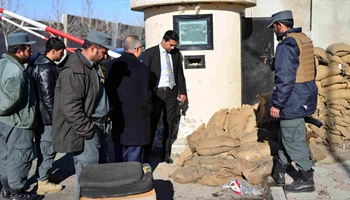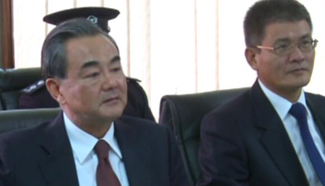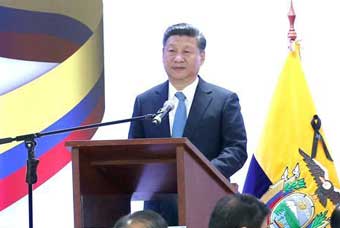SAN FRANCISCO, Jan. 11 (Xinhua) -- Bioengineers at Stanford University in west coast of the United States have created an ultra-low-cost, hand-powered blood centrifuge with rotational speeds of up to 125,000 revolutions per minute (rpm).
The device, capable of separating blood plasma from red cells in 1.5 minutes, applies the same mechanical principles in a whirligig, which is built by threading a loop of twine through two holes in a button, grabbing the loop ends, then rhythmically pulling. As the twine coils and uncoils, the button spins at a dizzying speed.
In the case of "paperfuge," which is built from paper worth 20 U.S. cents, the spin can exert centrifugal forces of 30,000 Gs.
"To the best of my knowledge, it's the fastest spinning object driven by human power," said Manu Prakash, an assistant professor of bioengineering at Stanford University and senior author of a paper published in the Jan. 10 issue of Nature Biomedical Engineering.
"There are more than a billion people around the world who have no infrastructure, no roads, no electricity. I realized that if we wanted to solve a critical problem like malaria diagnosis, we needed to design a human-powered centrifuge that costs less than a cup of coffee."
A centrifuge is critical for detecting diseases such as malaria, African sleeping sickness, human immunodeficiency virus (HIV) and tuberculosis.
Inspired by spinning toys, Prakash began brainstorming design ideas with Saad Bhamla, a postdoctoral research fellow in his lab and first author on the paper. After weeks of exploring ways to convert human energy into spinning forces, they began focusing on toys invented before the industrial age as yo-yos, tops and whirligigs.
"One night I was playing with a button and string, and out of curiosity, I set up a high-speed camera to see how fast a button whirligig would spin. I couldn't believe my eyes," said Bhamla, when he discovered that the whirring button was rotating at 10,000 to 15,000 rpms.
After two weeks of prototyping, he mounted a capillary of blood on a paper-disc whirligig and was able to centrifuge blood into layers.
With further improvements, the low-cost version is expected to enable precise diagnosis and treatment in the poor, off-the-grid regions where these diseases are prevalent.
"From a technical spec point of view, we can match centrifuges that cost from 1,000 to 5,000 U.S. dollars," Prakash was quoted as saying in a news release from Stanford.














